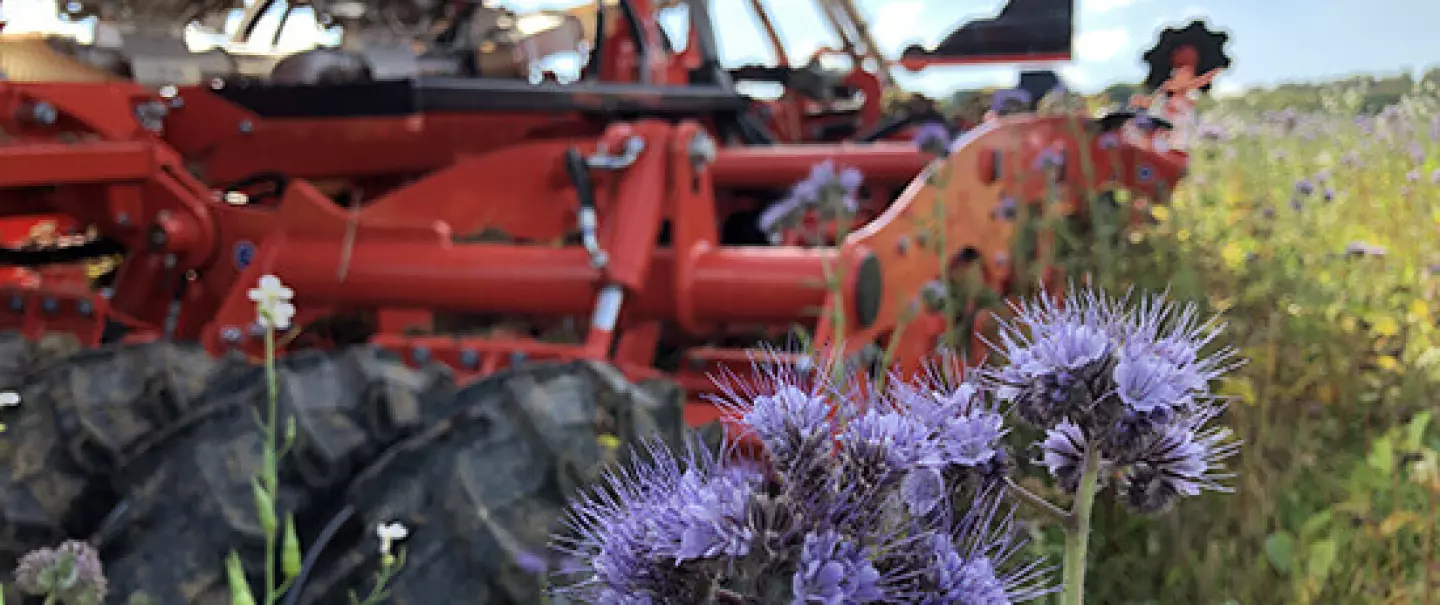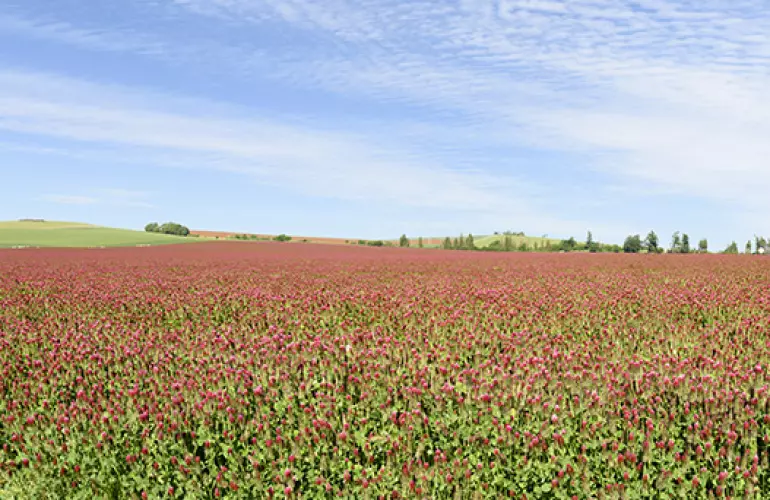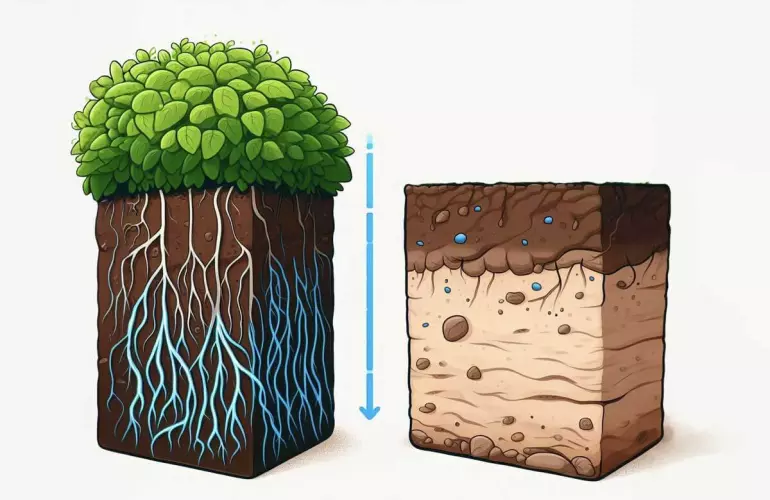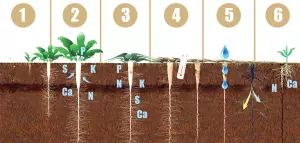
Nitrate-fixing cover crops
Nitrate-fixing intermediate crops are cover crops used to limit the loss of nitrates, thus, nitrogen in the soil. As they develop, they uptake mineral nitrogen from the soil which prevents leaching, i...
The aim of nitrate-fixing cover crops is to trap soluble nitrogen and avoid leaching. As cover crops develop, they absorb nitrates, preventing losses and pollution to surface water and groundwater. They are planted in the autumn after the cash crop has been harvested. They are generally destroyed and left in place to serve other agronomic purposes (soil structure, green manure, etc.).
For a nitrate-fixing intermediate crop to perform well, it's important to choose the right variety, alone or mixed, and to take care during planting. The more biomass produced, the greater the crop's capacity to fix nitrogen.
The main nitrate-fixing intermediate crops used today, alone or mixed, are alfalfa, hairy vetch, crimson clover, red clover, field peas and cowpeas.
The purpose of using cover crops for green manure is to return fertilizing elements to the soil for the next crop. They are not intended for harvest. After being destroyed, and the residues possibly buried, the organic matter decomposes to provide minerals, particularly nitrogen, for the following crop to uptake.
The following green-fertilizer crops can be sown in autumn to be ready for the following spring: Hairy vetch, winter rye, crimson clover winter peas, field peas, red clover and fava beans.
The following crops can be planted in early spring, before the May crops: vetch, pea, clover, oats, rye and buckwheat. Mixtures are also possible, such as vetch, peas and oats.
From April to September, if the fields are empty, possible species are: buckwheat, cowpeas, sorghum-sudangrass, millet and rye.
In organic farming, perennial cover crops such as alfalfa, ryegrass, fescue, or white clover are used for 2 or 3 consecutive years. They are included in the crop rotation and provide additional agronomic benefits. These crops should be destroyed before flowering, and before they reach a mature, woody stage, which could complicate decomposition and the release of nitrogen.
Intermediate crops used as cover crops are sown to protect the soil. They are planted to avoid leaving the soil bare between two crops or when the cash crop has not yet developed. They are sown either after harvest, or in the existing cover crop. They are destroyed before they start competing with the annual crop. The aim is to avoid erosion. That’s why it is one of the key practices of soil conservation agriculture. Cover crops improve the quality of the soil and biodiversity; two essential factors in the farming system. Rainwater also infiltrates more easily with a cover crop.
Plants are chosen for their root systems. A mix of plants is often used to get the benefit from several rooting systems which grow to different depths. Root exudates allow bio-organisms in the soil to multiply. The roots also penetrate the more compact or dense layers so that water can seep deep down. Crucifers such as radish are a good example.
Intermediate crops can fulfill various objectives. It is not unusual for a nitrate-fixing intermediate crop to be used as green manure. It just has to be destroyed and left on the field. In all cases, intermediate crops are used as cover crops, because they naturally cover the soil when they grow, providing all the advantages that that entails.

Nitrate-fixing intermediate crops are cover crops used to limit the loss of nitrates, thus, nitrogen in the soil. As they develop, they uptake mineral nitrogen from the soil which prevents leaching, i...

Everything you need to know about cover crops and intercropping practices using cover crops, and implementing nitrate-fixing cover crops. ...


